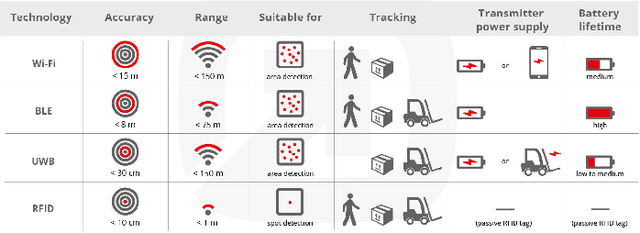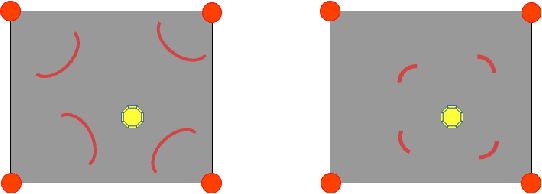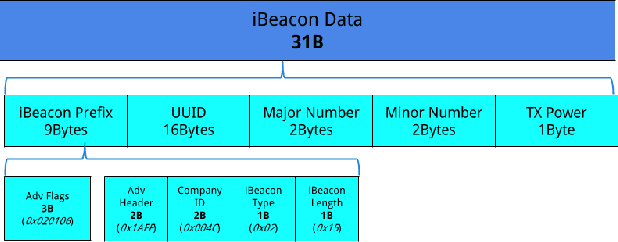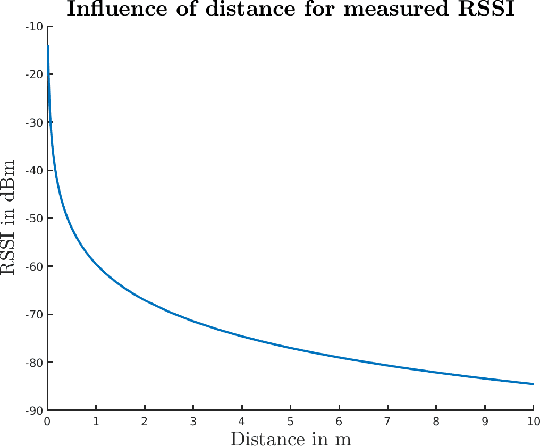Silvano Cortesi
A Proximity-Based Approach for Dynamically Matching Industrial Assets and Their Operators Using Low-Power IoT Devices
Dec 18, 2024



Abstract:Asset tracking solutions have proven their significance in industrial contexts, as evidenced by their successful commercialization (e.g., Hilti On!Track). However, a seamless solution for matching assets with their users, such as operators of construction power tools, is still missing. By enabling assetuser matching, organizations gain valuable insights that can be used to optimize user health and safety, asset utilization, and maintenance. This paper introduces a novel approach to address this gap by leveraging existing Bluetooth Low Energy (BLE)-enabled low-power Internet of Things (IoT) devices. The proposed framework comprises the following components: i) a wearable device, ii) an IoT device attached to or embedded in the assets, iii) an algorithm to estimate the distance between assets and operators by exploiting simple received signal strength indicator (RSSI) measurements via an Extended Kalman Filter (EKF), and iv) a cloud-based algorithm that collects all estimated distances to derive the correct asset-operator matching. The effectiveness of the proposed system has been validated through indoor and outdoor experiments in a construction setting for identifying the operator of a power tool. A physical prototype was developed to evaluate the algorithms in a realistic setup. The results demonstrated a median accuracy of 0.49m in estimating the distance between assets and users, and up to 98.6% in correctly matching users with their assets.
Earable and Wrist-worn Setup for Accurate Step Counting Utilizing Body-Area Electrostatic Sensing
Jul 08, 2024Abstract:Step-counting has been widely implemented in wrist-worn devices and is accepted by end users as a quantitative indicator of everyday exercise. However, existing counting approach (mostly on wrist-worn setup) lacks robustness and thus introduces inaccuracy issues in certain scenarios like brief intermittent walking bouts and random arm motions or static arm status while walking (no clear correlation of motion pattern between arm and leg). This paper proposes a low-power step-counting solution utilizing the body area electric field acquired by a novel electrostatic sensing unit, consuming only 87.3 $\mu$W of power, hoping to strengthen the robustness of current dominant solution. We designed two wearable devices for on-the-wrist and in-the-ear deployment and collected body-area electric field-derived motion signals from ten volunteers. Four walking scenarios are considered: in the parking lot/shopping center with/without pushing the shopping trolley. The step-counting accuracy from the prototypes shows better accuracy than the commercial wrist-worn devices (e.g.,96% of the wrist- and ear-worn prototype vs. 66% of the Fitbit when walking in the shopping center while pushing a shopping trolley). We finally discussed the potential and limitations of sensing body-area electric fields for wrist-worn and ear-worn step-counting and beyond.
Angle of Arrival and Centimeter Distance Estimation on a Smart UWB Sensor Node
Dec 21, 2023



Abstract:Accurate and low-power indoor localization is becoming more and more of a necessity to empower novel consumer and industrial applications. In this field, the most promising technology is based on UWB modulation; however, current UWB positioning systems do not reach centimeter accuracy in general deployments due to multipath and nonisotropic antennas, still necessitating several fixed anchors to estimate an object's position in space. This article presents an in-depth study and assessment of angle of arrival (AoA) UWB measurements using a compact, low-power solution integrating a novel commercial module with phase difference of arrival (PDoA) estimation as integrated feature. Results demonstrate the possibility of reaching centimeter distance precision and ang 2.4 average angular accuracy in many operative conditions, e.g., in a ang 90 range around the center. Moreover, integrating the channel impulse response, the phase differential of arrival, and the point-to-point distance, an error correction model is discussed to compensate for reflections, multipaths, and front-back ambiguity.
Energy-Aware Adaptive Sampling for Self-Sustainability in Resource-Constrained IoT Devices
Oct 31, 2023



Abstract:In the ever-growing Internet of Things (IoT) landscape, smart power management algorithms combined with energy harvesting solutions are crucial to obtain self-sustainability. This paper presents an energy-aware adaptive sampling rate algorithm designed for embedded deployment in resource-constrained, battery-powered IoT devices. The algorithm, based on a finite state machine (FSM) and inspired by Transmission Control Protocol (TCP) Reno's additive increase and multiplicative decrease, maximizes sensor sampling rates, ensuring power self-sustainability without risking battery depletion. Moreover, we characterized our solar cell with data acquired over 48 days and used the model created to obtain energy data from an open-source world-wide dataset. To validate our approach, we introduce the EcoTrack device, a versatile device with global navigation satellite system (GNSS) capabilities and Long-Term Evolution Machine Type Communication (LTE-M) connectivity, supporting MQTT protocol for cloud data relay. This multi-purpose device can be used, for instance, as a health and safety wearable, remote hazard monitoring system, or as a global asset tracker. The results, validated on data from three different European cities, show that the proposed algorithm enables self-sustainability while maximizing sampled locations per day. In experiments conducted with a 3000 mAh battery capacity, the algorithm consistently maintained a minimum of 24 localizations per day and achieved peaks of up to 3000.
Optimizing IoT-Based Asset and Utilization Tracking: Efficient Activity Classification with MiniRocket on Resource-Constrained Devices
Oct 23, 2023



Abstract:This paper introduces an effective solution for retrofitting construction power tools with low-power IoT to enable accurate activity classification. We address the challenge of distinguishing between when a power tool is being moved and when it is actually being used. To achieve classification accuracy and power consumption preservation a newly released algorithm called MiniRocket was employed. Known for its accuracy, scalability, and fast training for time-series classification, in this paper, it is proposed as a TinyML algorithm for inference on resource-constrained IoT devices. The paper demonstrates the portability and performance of MiniRocket on a resource-constrained, ultra-low power sensor node for floating-point and fixed-point arithmetic, matching up to 1% of the floating-point accuracy. The hyperparameters of the algorithm have been optimized for the task at hand to find a Pareto point that balances memory usage, accuracy and energy consumption. For the classification problem, we rely on an accelerometer as the sole sensor source, and BLE for data transmission. Extensive real-world construction data, using 16 different power tools, were collected, labeled, and used to validate the algorithm's performance directly embedded in the IoT device. Experimental results demonstrate that the proposed solution achieves an accuracy of 96.9% in distinguishing between real usage status and other motion statuses while consuming only 7kB of flash and 3kB of RAM. The final application exhibits an average current consumption of less than 15{\mu}W for the whole system, resulting in battery life performance ranging from 3 to 9 years depending on the battery capacity (250-500mAh) and the number of power tool usage hours (100-1500h).
Design and Implementation of an RSSI-Based Bluetooth Low Energy Indoor Localization System
Oct 23, 2023



Abstract:Indoor Positioning System (IPS) is a crucial technology that enables medical staff and hospital managements to accurately locate and track persons or assets inside the medical buildings. Among other technologies, Bluetooth Low Energy (BLE) can be exploited for achieving an energy-efficient and low-cost solution. This work presents the design and implementation of an received signal strength indicator (RSSI)-based indoor localization system. The paper shows the implementation of a low complex weighted k-Nearest Neighbors algorithm that processes raw RSSI data from connection-less iBeacon's. The designed hardware and firmware are implemented around the low-power and low-cost nRF52832 from Nordic Semiconductor. Experimental evaluation with the real-time data processing has been evaluated and presented in a 7.2 m by 7.2 m room with furniture and 5 beacon nodes. The experimental results show an average error of only 0.72 m in realistic conditions. Finally, the overall power consumption of the fixed beacon with a periodic advertisement of 100 ms is only 50 uA at 3 V, which leads to a long-lasting solution of over one year with a 500 mAh coin battery.
 Add to Chrome
Add to Chrome Add to Firefox
Add to Firefox Add to Edge
Add to Edge